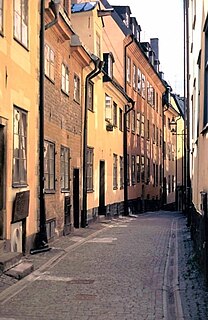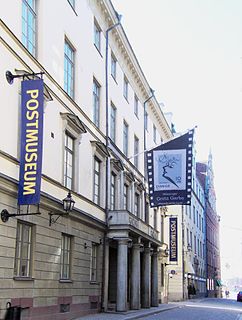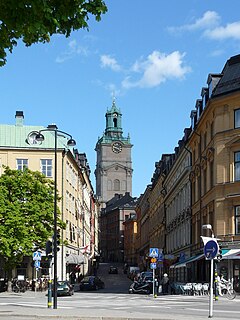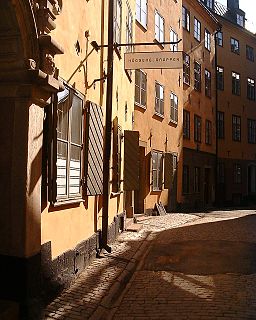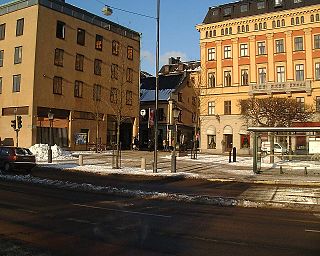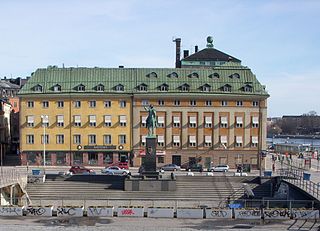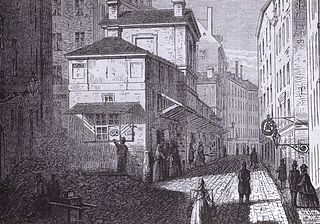
Tyska Stallplan (Swedish: "German Stable Square" or literally "Plane") is a street in Gamla stan, the old town in central Stockholm, Sweden. Stretching south from Svartmangatan to Prästgatan, it is connected to Baggensgatan and Mårten Trotzigs Gränd, while forming a (somewhat) parallel street to Österlånggatan and Tyska Brinken.
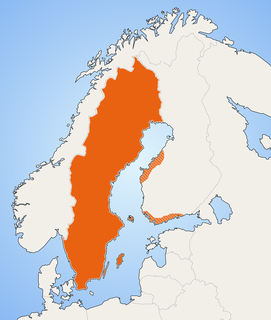
Swedish is a North Germanic language spoken natively by 10 million people, predominantly in Sweden, and in parts of Finland, where it has equal legal standing with Finnish. It is largely mutually intelligible with Norwegian and to some extent with Danish, although the degree of mutual intelligibility is largely dependent on the dialect and accent of the speaker. Both Norwegian and Danish are generally easier for Swedish speakers to read than to listen to because of difference in accent and tone when speaking. Swedish is a descendant of Old Norse, the common language of the Germanic peoples living in Scandinavia during the Viking Era. It has the most speakers of the North Germanic languages.

A street is a public thoroughfare in a built environment. It is a public parcel of land adjoining buildings in an urban context, on which people may freely assemble, interact, and move about. A street can be as simple as a level patch of dirt, but is more often paved with a hard, durable surface such as concrete, cobblestone or brick. Portions may also be smoothed with asphalt, embedded with rails, or otherwise prepared to accommodate non-pedestrian traffic.
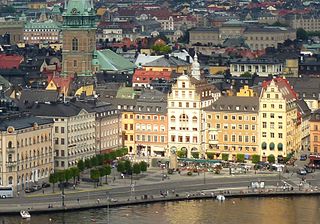
Gamla stan, until 1980 officially Staden mellan broarna, is the old town of Stockholm, Sweden. Gamla stan consists primarily of the island Stadsholmen. Officially, but not colloquially, Gamla stan includes the surrounding islets Riddarholmen, Helgeandsholmen, and Strömsborg.
Contents
By the street are the public library and the major school (Storkyrkoskolan, "School of the Great Church" (e.g. Storkyrkan)) of the told town. While named a square, it undoubtedly remains a matter of taste and definition whether this elongated open space should be regarded as a street.

Storkyrkan, officially named Sankt Nikolai kyrka and informally called Stockholms domkyrka, is the oldest church in Gamla stan, the old town in central Stockholm, Sweden. Originally the main parish church of Stockholm, it currently also serves as the seat of the Lutheran Bishop of Stockholm within the Church of Sweden since the creation of the Diocese of Stockholm in 1942. It is an important example of Swedish Brick Gothic. Situated next to the Royal Palace, it forms the western end of Slottsbacken, the major approach to the Royal Palace, while the streets Storkyrkobrinken, Högvaktsterrassen, and Trångsund passes north and west of it respectively. South of the church is the Stockholm Stock Exchange Building facing Stortorget and containing the Swedish Academy, Nobel Library, and Nobel Museum.
